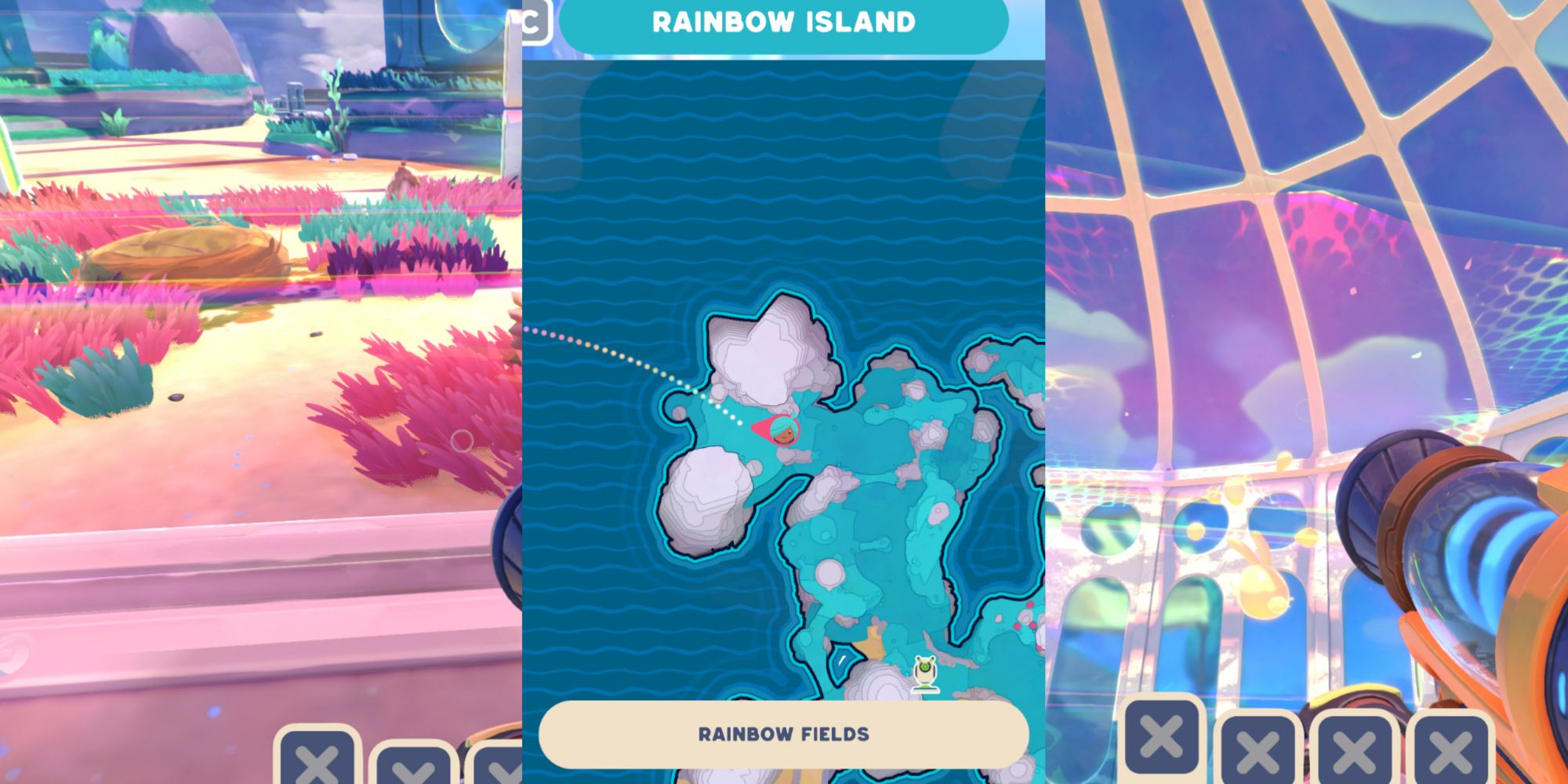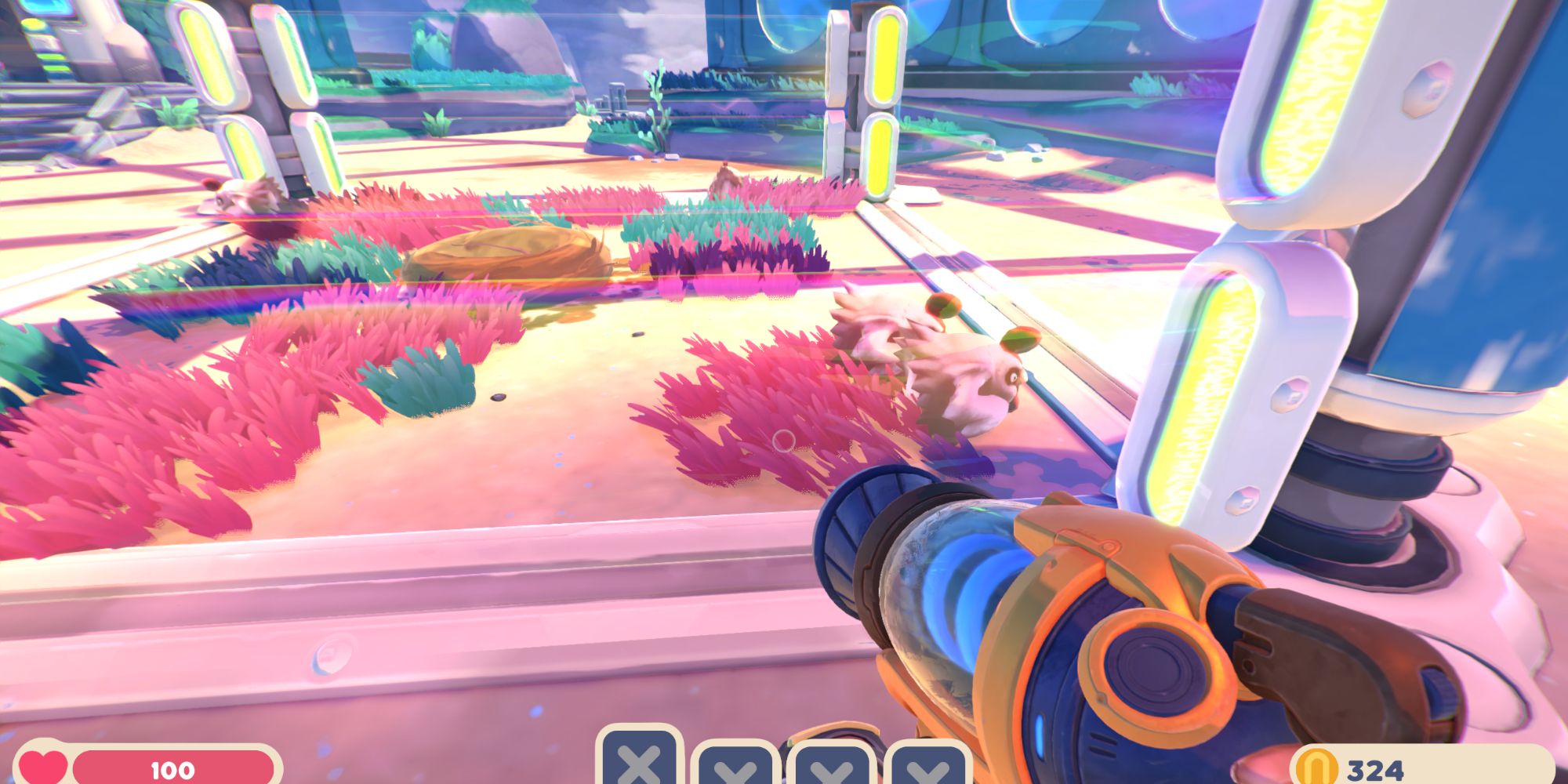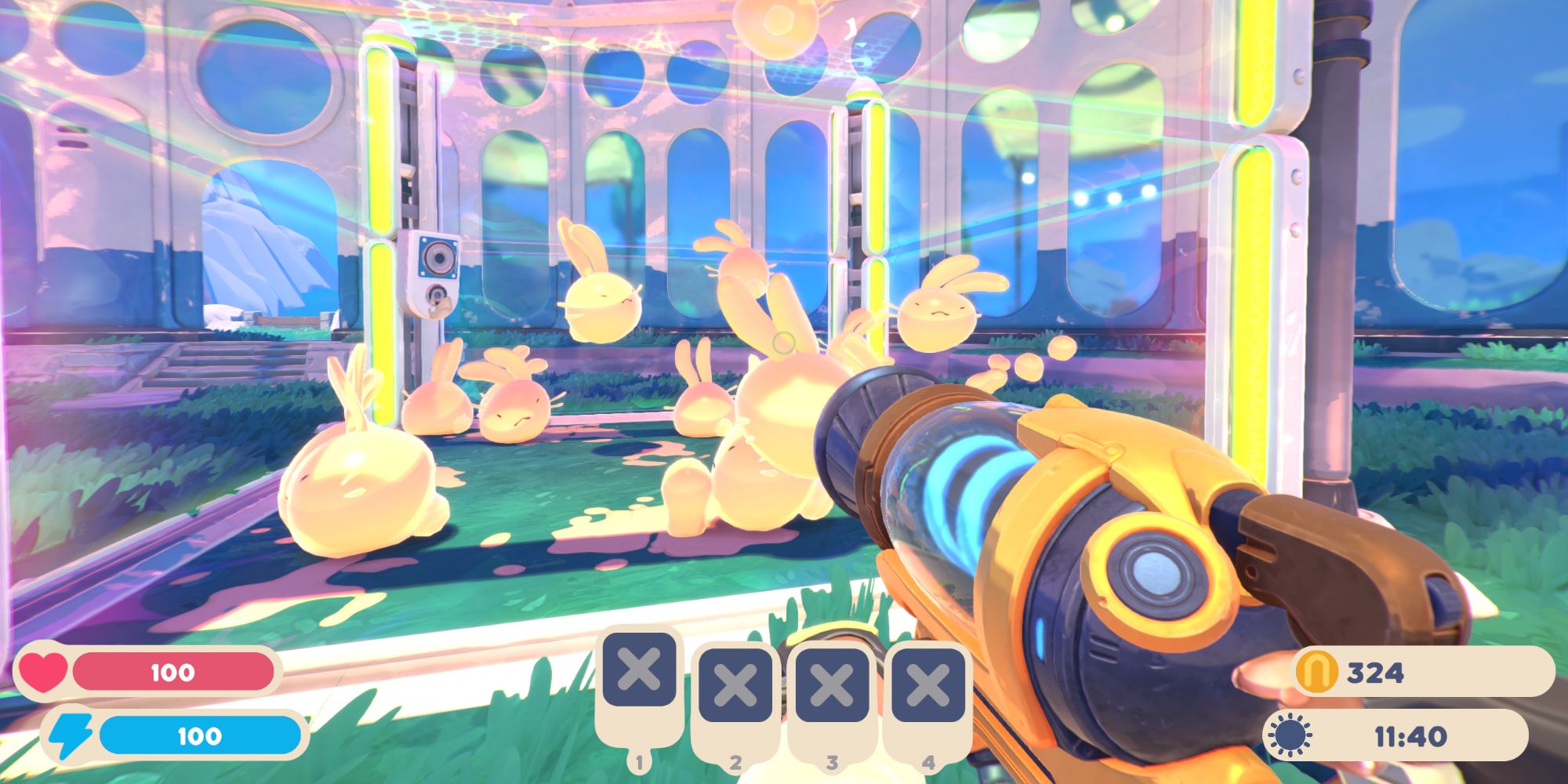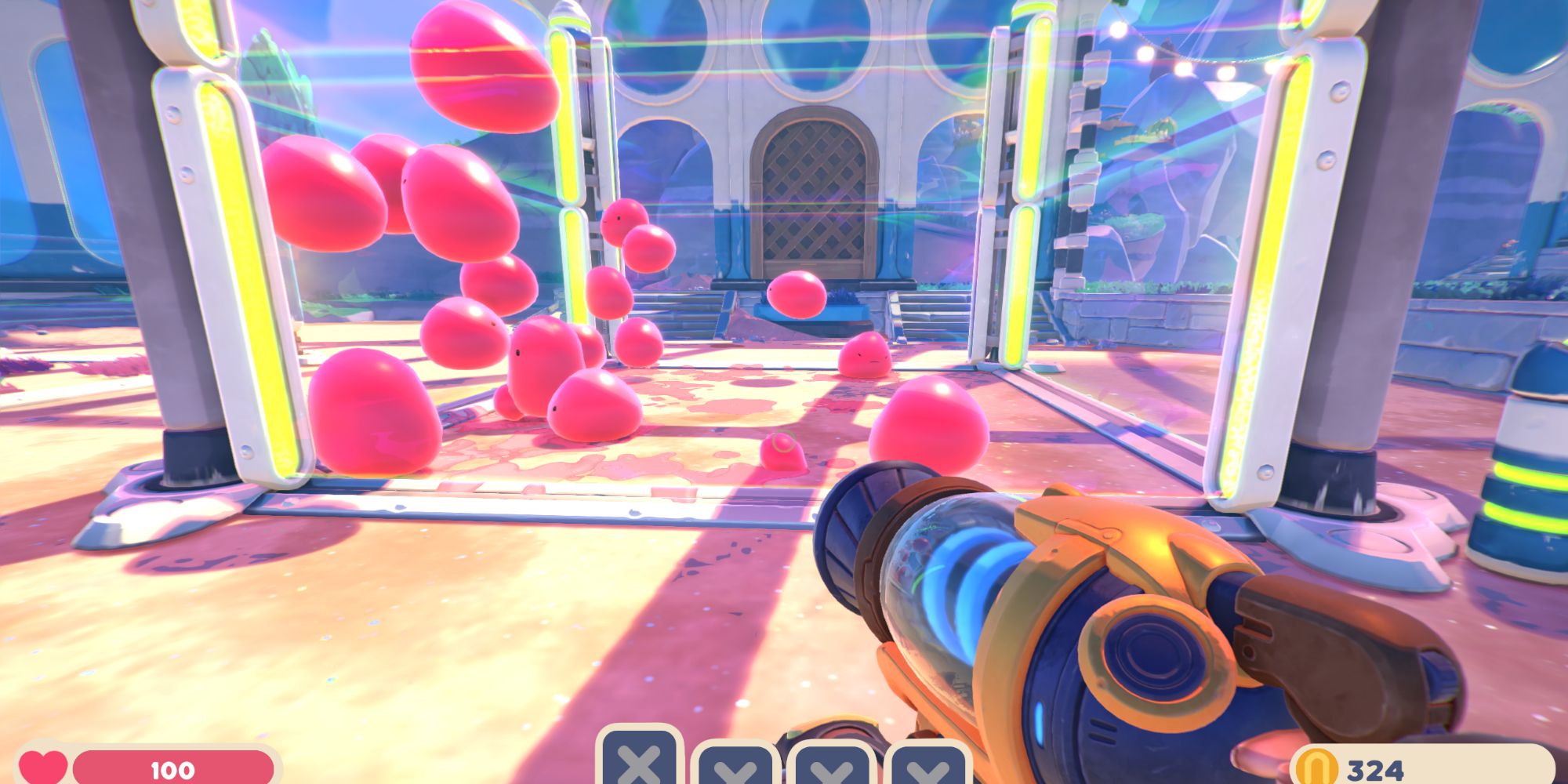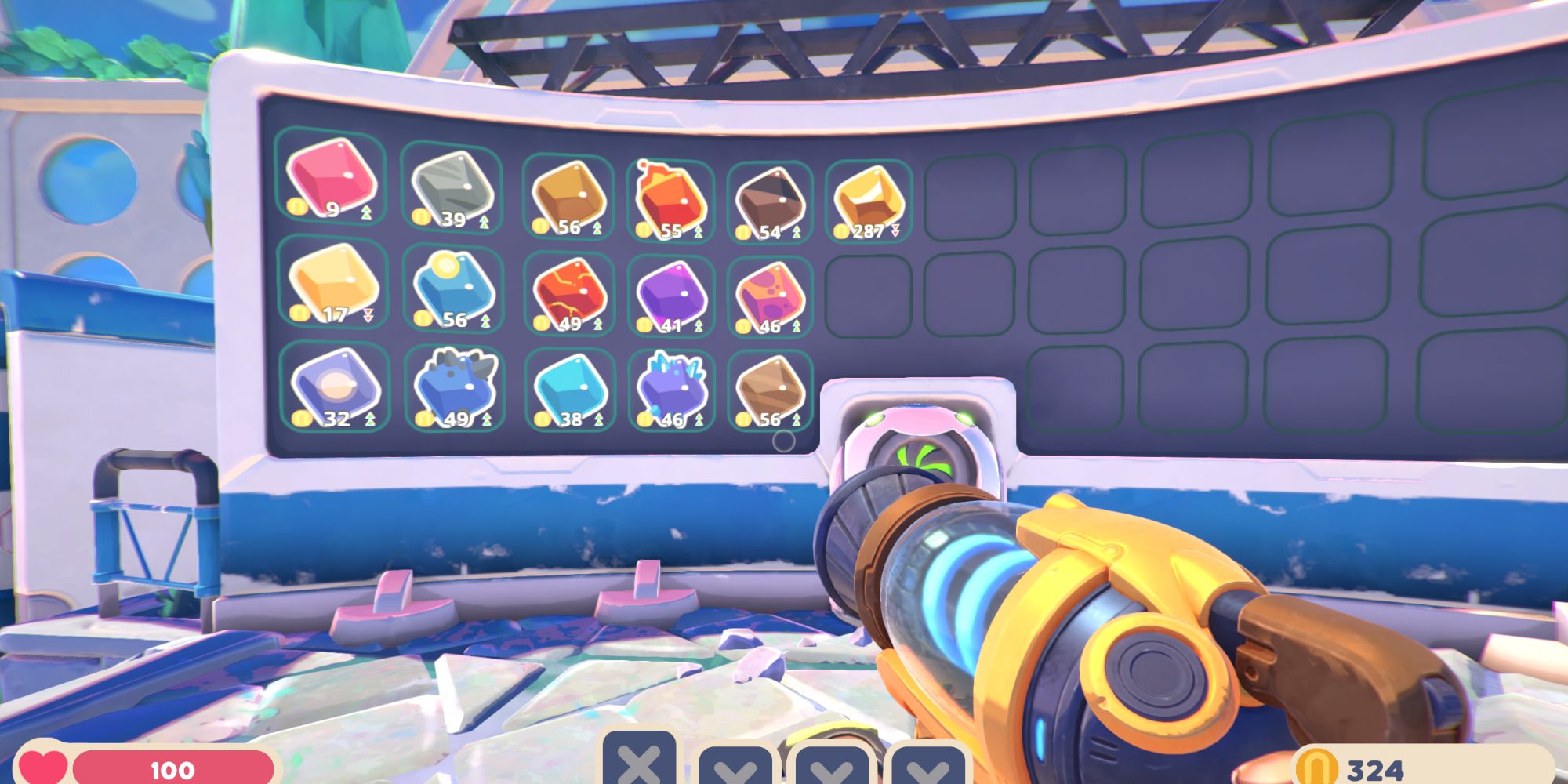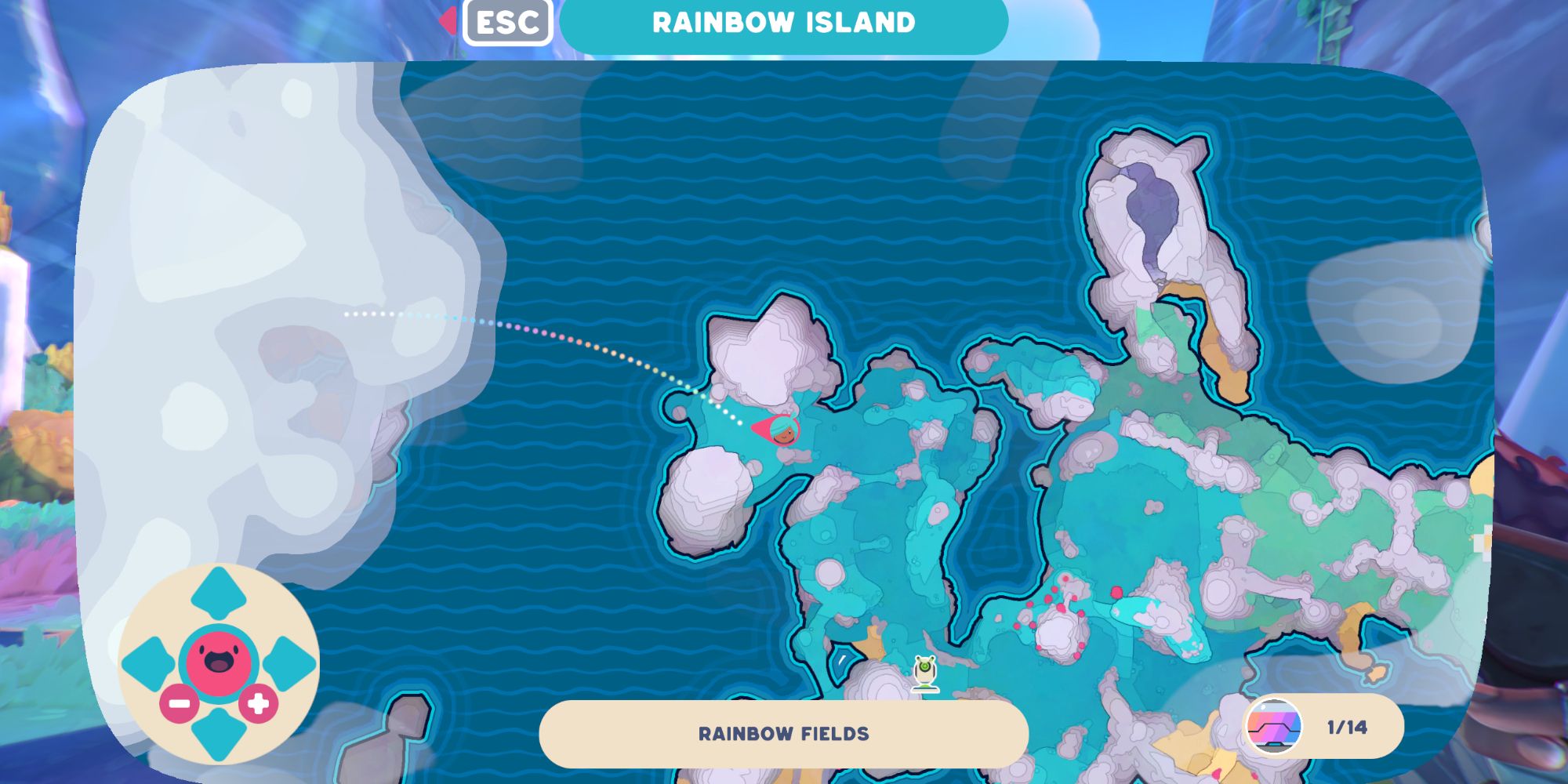Slime Rancher 2 lives at the intersection of farming sims and creature-collecting games. Running around Rainbow Island with a vacuum, sucking up these adorable jelly monsters, and taking them back to the Observatory to study and raise is a ton of fun, but it can also be tricky to figure out what's the most efficient way to run a ranch.
Slime Rancher 2 includes a number of different slime breeds, each with its own distinct appearance and quirks, and some are specialized enough to require unique raising instructions. Some tips, however, apply no matter what kind of slime ranch the player is trying to run. Food, shelter, research, and exploration all play important roles in caring for one's slimes (and turning a steady profit), so there's a lot to consider. Here are some important tips no matter what kind of slimes one wants to raise.
6 Mind Their Diet
Slimes are unique creatures. They come in many breeds in Slime Rancher 2, and the differences between them are more than just aesthetic. While the player may want to collect and raise one type because of the way it glows and another type because of its cute ears, there are substantive differences between slimes of which any good rancher must be mindful. One of the biggest differences is their diet.
Pink Slimes are omnivorous and will eat any food tossed to them, be it meat, fruit, or vegetables. Other slimes are pickier and have preferred foods, rejecting anything else the player tries to give them. Fortunately, the player can tell a slime's preferred diet by checking beneath the slime's name whenever the player highlights them with the reticule.
5 Stockpile Food
Knowing what slimes want to eat is only half the battle when it comes to food. Having the food to give them is a mission in itself. Before deciding to raise a particular type of slime, it's important to identify the food they will need and figure out how that food will be supplied. The simplest option is to simply scavenge food that one needs in the wild outside the Observatory, gathering the wild fruits, vegetables, and animals that one comes across.
Scavenging works fine when the player has only a small handful of slimes, especially if they're pink, but the more slimes (and more types of slimes) the player has, the less efficient that feeding process becomes. The best solution, therefore, is to raise one's own food, creating Coops in which to raise Hen Hens and Roostros and gardens in which to plant fruits and vegetables. Make sure to always have a steady supply of food to avoid a slime revolt.
4 Walls And Ceilings
At the beginning of the game, the Observatory has a number of empty plots on which the player can build. Whether they will be used to house slimes, grow food, or do something else is up to the player. The decision of what to build there isn't the end of the process, however, as buildings come with a variety of potential upgrades. Some of these can be safely passed on until later in the game, while others are absolutely essential for certain activities.
Two upgrades set themselves apart as being important for most ranches: higher walls and ceilings. Some slimes are bouncy, especially after being fed, and have a habit of jumping out of their Corrals if not properly contained. If the player isn't careful, slimes will happily jump out of their confines and into neighboring Hen Hen Coops, eating all the player's livestock while they're away foraging. When deciding what slimes to keep, always take note of what kind of enclosures they will need and whether the money for those enclosures is available (or will be soon).
3 Know Slime Quirks
Every breed of slime has its own individual quirks that beginners will end up learning as they go. The more specialized the slime, the more particular the player's Observatory setup will need to be in order to care for them properly. For that reason, it's often better to concentrate on raising just a few slime types at first, lest the player's ambition get ahead of their ability to actually care for these gelatinous critters.
Slimes at the beginning of the game are relatively low maintenance, with more eccentric and needy types being introduced later. Regardless of what kind of slime the player is raising, it pays to do some research, just as one would when deciding which upgrades to get first. Observing slimes in the wild before committing to capturing and raising them is a good idea since the player will know whether they need a tinted enclosure to protect light-sensitive slime or a large flock of Hen Hens to feed a hungry carnivore.
2 Focus Your Efforts
Other than starving them, there's no real wrong way to raise slimes in Slime Rancher 2. Some methods just take longer to produce desirable results. One thing that will help any new ranch, no matter what type of slimes the player wants to raise, is to focus on one or two slime types at first: specifically, those that will help the player with their early research.
Slimes produce Plorts after being fed, and Plorts can be used as the raw material for upgrades at the Observatory. If the player knows they want to upgrade their Health first, it's smart to raise slimes that will produce the Plorts desirable for that research. After the player's ranch is larger and running more smoothly the player can raise whatever kind of slimes they want. If the goal is efficiency early on, leading to happier slimes and a less stressful game for the player, focusing one's research helps make this wholesome experience even easier.
1 Stay Local
Rainbow Island is a surprisingly large area, featuring multiple biomes, numerous slime species, and a number of hidden resources. Everything about the look and feel of Slime Rancher 2 makes exploration enticing, and it's tempting to leave the safety of the Observatory behind and try to venture far and wide right away.
It's a good idea to stay local at first, however. The further one ventures, the more breeds of slime the player will encounter, and the more the game will expect from the player in terms of upgrades and gadgets. Staying local ensures the player can get their feet under them, learning the basics while keeping their first two or three slime breeds well-fed, happy, and safely corralled. It doesn't matter what kind of slime the player is raising: they won't be happy if they're abandoned without food for long stretches just because the player wants to go sightseeing right away. Make sure things are taken care of at the Observatory, and the slimes will keep happily making Plorts long into the future.
Slime Rancher 2 is available now for PC and Xbox Series X/S.

